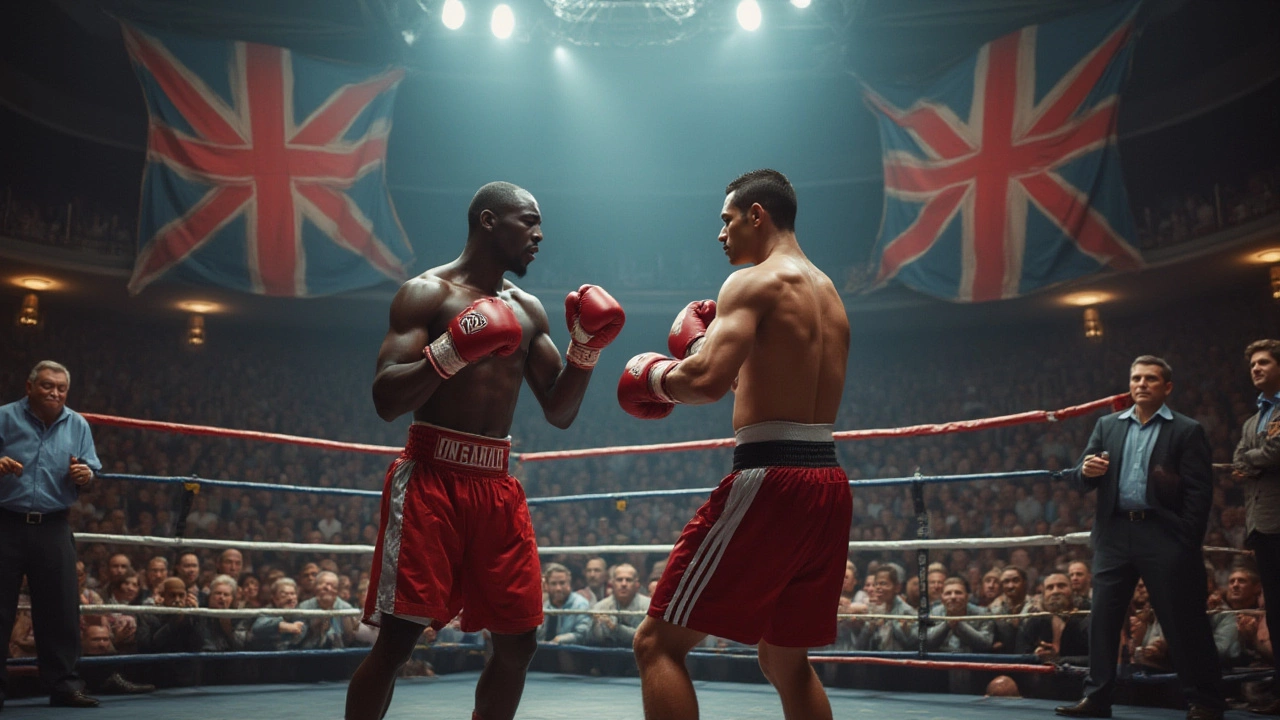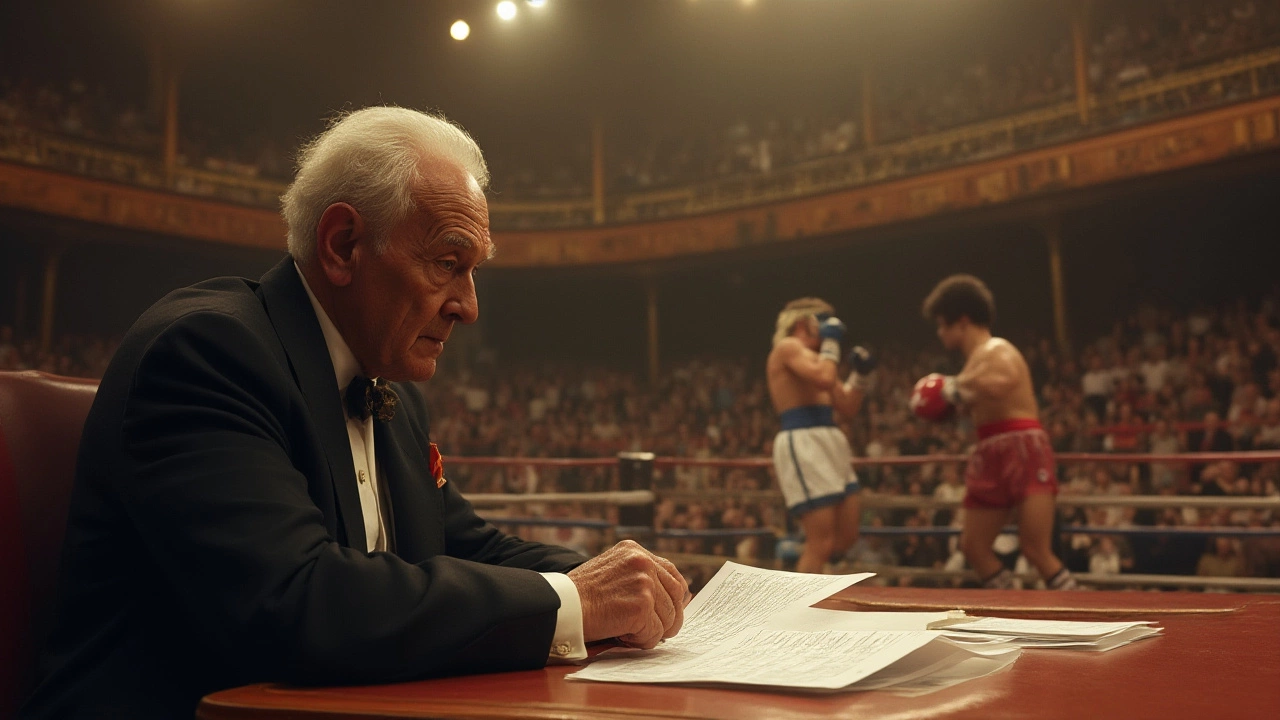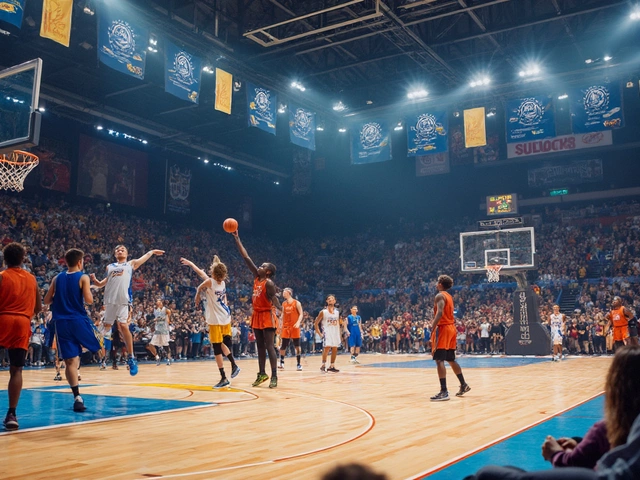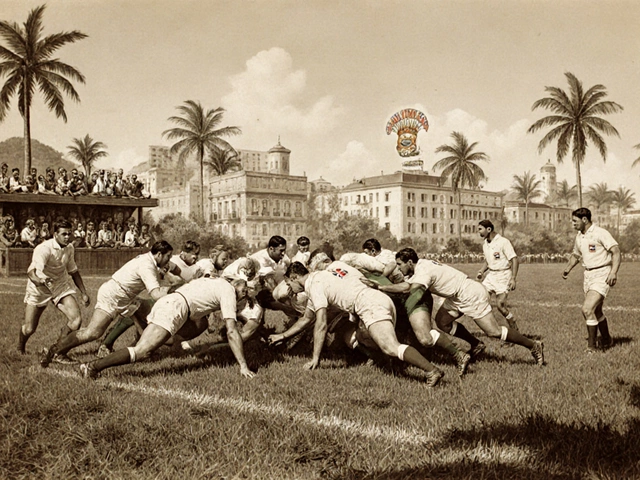
Boxing Matches July 22, 2025
How to Win a Boxing Match: Rules, Knockouts, and Judge Decisions Explained
How is a boxing match won? You might think it’s just about two people in the ring slugging it out until one drops, but the rules run deeper. Many legends, like Muhammad Ali and Floyd Mayweather, made careers not just by throwing hard punches, but by mastering the different ways a bout can end. The drama isn’t just about who’s standing at the end—it’s about points, timing, endurance, and sometimes, a single mistake. Boxing isn’t for the faint of heart, and the path to victory is way more complicated than it looks on a movie screen.
The Three Classic Ways to Win a Boxing Match
If you picture a knockout punch—that single, cinematic moment where one boxer crumples—it’s hard to look past it. The knockout, or KO, is definitely the most dramatic finish, but it’s just the tip of the iceberg. Let’s break down all the ways a fighter can record a win inside the ropes.
First, there’s the knockout. This happens when a boxer lands a shot, and the opponent can’t get to their feet (or show they’re able to defend themselves) before the referee counts to ten. Think about Mike Tyson’s 91-second KO of Michael Spinks—nobody argued with a verdict that immediate. Then you’ve got the TKO, or technical knockout, which is more common than people think. If a boxer is getting battered and clearly can’t continue, the ref, a doctor, or a boxer’s own corner can call a halt, even if the fighter hasn’t been totally floored. In 2021, Tyson Fury stopped Deontay Wilder via 11th-round TKO—Wilder was conscious but couldn’t defend himself. Safety comes first, especially with so much at stake.
But what if both boxers make it to the final bell? That's where scoring comes in—the judges sitting ringside add up the points using a 10-point must system after every round. Usually, three judges keep tabs, and their numbers decide who wins if nobody gets stopped. Points are awarded based on clean punches, effective aggression, defense, and ring generalship (basically, who controls the flow of action). If you’re fighting at the highest level, like Canelo Alvarez or Vasiliy Lomachenko, it’s not just about swinging wild. It’s tactical—land more meaningful shots and avoid damage, and you walk away with the victory.
There’s also the rare disqualification win. Fights sometimes get ugly: think biting (thanks, Mike Tyson), low blows, or headbutts. If someone can’t—or won’t—follow the rules, the ref can give warnings, then deduct points, and, in extreme cases, throw a fighter out and award victory to their opponent. Finally, if a fighter gets injured early on—say, an accidental clash of heads causes a bad cut—and the bout can’t continue, judges can decide by what’s called a technical decision or declare it a no contest, depending on how many rounds have been completed.
The sport wants definitive winners. But much of boxing’s beauty and heartbreak comes from how a single match can end in so many ways—sometimes with a bang, sometimes with a quiet collection of numbers, sometimes with the bitter taste of a rule breach.
The Art of Scoring: Points and Judge Decisions
People often grumble about “robberies” in boxing—those close fights where the crowd sees one thing, and the judges see another. But scoring itself is more structured than you might think. Since the 1960s, most professional bouts around the world use the 10-point must system. Here, the winner of a round always gets 10 points, and the loser gets 9 or fewer. If there’s a knockdown, the score usually shifts to 10-8. Multiple knockdowns? You might see a brutal 10-7 round. Judges can also take away points for fouls—like repeatedly hitting below the belt or headbutting—so numbers can swing fast.
| Points Scored | Situation |
|---|---|
| 10-9 | Winner edged round |
| 10-8 | Winner scored a knockdown |
| 10-7 | Winner scored two knockdowns |
| 9-9 | Points deduction to winner for foul |
| 10-10 | Very rare, judges saw round as dead even |
So what do judges look for, really? Here’s a breakdown:
- Clean punching: Who lands more shots that clearly connect?
- Effective aggression: Is the fighter making moves with purpose, not just throwing wild shots?
- Ring generalship: Who seems to be dictating the pace and style of the action?
- Defense: Who’s better at slipping, blocking, or avoiding punches?
If at least two of the three judges score the fight for the same boxer, that’s a decision win. If all three say the same, that’s a unanimous decision. And split decisions? One judge goes the other way, but two have it for the winner. There’s even a “majority decision” if one judge thinks it's a draw but the others pick a winner. You’ll sometimes see a “draw” if two judges can’t decide.
Plenty of champions made their name on points, not power. Mayweather, for example, went undefeated in 50 fights by outthinking rather than outslugging his opponents. Judges’ cards matter as much as the size of a boxer’s right hand.

Technical Knockouts, Disqualifications, and the Role of Referees
What happens if a boxer is clearly in trouble, but not actually knocked out? The referee is the single most important person in the ring at that moment. He’s tasked with protecting the fighters, which means if a boxer isn’t defending themselves—maybe they’re taking shots with their hands down, wobbling around, or stuck in a corner—he can step between them and stop the action. That’s a TKO, and it’s all about safety. Even the ringside doctor or a boxer’s corner team can do this; one famous example is when Buddy McGirt threw in the towel to protect Arturo Gatti in 2002—Gatti protested, but he was done.
A DQ, or disqualification, is less common but does happen. Think of the 1997 Holyfield-Tyson rematch, where Tyson infamously bit Holyfield’s ear—twice! That cost Tyson the fight, his boxing license (for a time), and a whole lot of public respect. Disqualifications sometimes come from repeated fouls, failing drug tests, or refusing to follow the referee’s instructions. And if a fighter knocks out another with an illegal punch after the bell, the result might be a DQ or a no-contest after a review.
The referee’s decisions are final—there’s no instant replay to save a controversial call (except in some modern commissions with new rules, but that still depends on the location). It’s part of what makes boxing unpredictable: one second you’re watching a fight, and the next, a single misjudgment changes the outcome completely.
- Tip for future boxers: never turn your back, always protect yourself, and try not to leave anything up to the ref or judges—go for the clean, clear win when you can.
Winning Early vs. Winning on Points: Strategies in the Ring
There’s this saying: “Don’t leave it in the hands of the judges.” Why? Because a split or controversial decision can haunt a boxer’s career. So, fighters often train for both—power to chase an early stoppage and stamina to go the distance. Knockout artists like Deontay Wilder, who’ve scored 42 KOs in 46 wins, are always dangerous; one clean punch can erase a points deficit. But technical fighters, like Oleksandr Usyk or Shakur Stevenson, spend each round banking points and avoiding unnecessary risks.
Game plans change on the fly. If a boxer notices their opponent tiring, maybe they ramp things up and go for a finish. If they’re ahead on points, they might get defensive in the last rounds, using footwork and clinching to avoid trouble. At the championship level, the difference often comes from a second’s decision: step forward and exchange, or box smart and frustrate your rival?
Another angle: trainers and their advice. Legendary coaches like Emanuel Steward drilled his boxers not just for physical fitness, but ring IQ. Sometimes a fighter will win rounds without ever landing the biggest punches, simply by showing more control, better timing, and cleaner technique. You see this in bouts where the punch stats look even, but one fighter gets the nod from nearly every judge just by “looking” better—dictating pace and making cleaner contact.
- If you’re watching as a fan, don’t focus only on power shots. Watch for the boxer who dictates the location of the fight (center ring vs. ropes), who lands more jabs, or who seems to have the better gas tank in the final rounds.

Controversies, Rematches, and Famous Finishes
Not every match ends cleanly. So many classic bouts are remembered for dodgy decisions, wild endings, or sheer drama in the final seconds. Picture the first fight between Gennady Golovkin and Canelo Alvarez in 2017. Plenty thought Golovkin had the edge, but it ended in a split draw, and fans spent months arguing over the cards. Or look at the “Phantom Punch” that Ali used to stop Sonny Liston—some still wonder if Liston took a dive or was really knocked out.
Sometimes, controversy leads to rematches. Rocky Marciano famously never lost, but Joe Louis insisted he wanted another shot after being battered in their epic clash. Rivalries like Pacquiao vs. Marquez needed four fights to settle, each ending with wildly different results—a draw, a split decision, and finally a shocking knockout.
Here are a few unforgettable finishes in boxing history that show just how wild the ending of a match can be:
- Buster Douglas vs. Mike Tyson (1990): Douglas upset Tyson with a 10th-round KO that shook the world.
- Larry Holmes vs. Gerry Cooney (1982): Holmes won by TKO in the 13th, but controversy filled the build-up more than the finish itself.
- Floyd Mayweather vs. Jose Luis Castillo (2002): Many fans saw Castillo winning, but Mayweather’s defensive mastery swayed two of the three judges.
- Sugar Ray Leonard vs. Marvin Hagler (1987): That split decision still fuels arguments decades later.
Modern boxing is trying to clean up its act. Technology is creeping in—instant replay is now used in California and New York, for instance, but only to review certain fouls or knockdowns. Some fights even have open scoring, letting fans and fighters know how judges see it round by round, although that’s still rare outside of places like Japan and Mexico.
At the end of the day, winning a boxing match is as much about beating your opponent as it is about mastering the framework that surrounds the sport. Rules, strategy, and sometimes luck all play a part. The best advice for young boxers? Respect the scoring, hope for a fair referee, and remember: history remembers the finish, not the footnotes.




